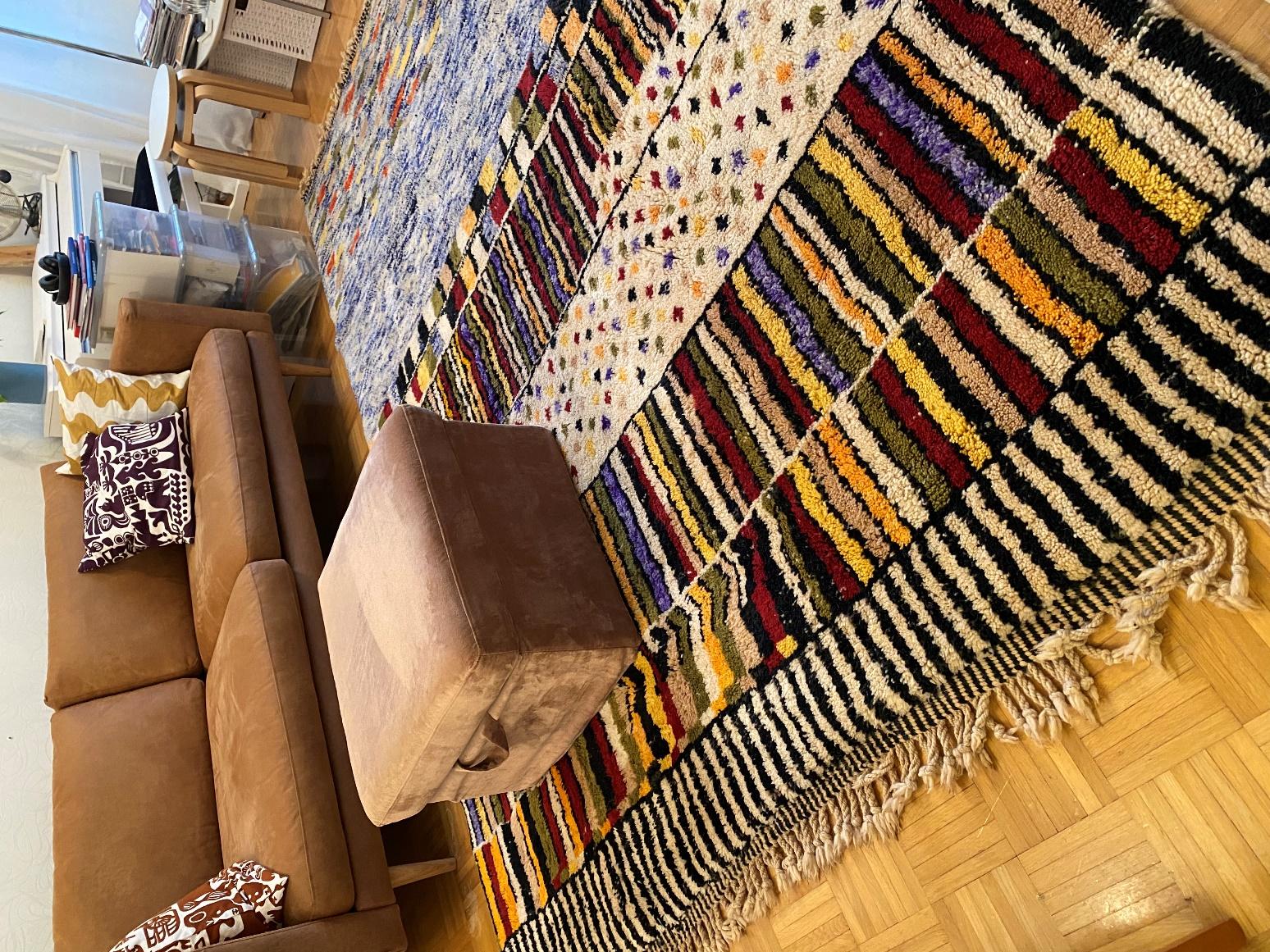Introduction
Berber rugs are known for their intricate patterns, beautiful colors, and cultural significance. However, what many people do not know is that the creation of these rugs is often a collaborative effort, with women playing a vital role in the weaving process. In this article, we will explore the role of women in the creation of Berber rugs, and how their contributions have helped to shape this important craft.
The role of women in the creation of Berber rugs.
The role of women in the creation of Berber rugs is significant and essential. In Berber society, women are traditionally responsible for weaving and creating textiles, including rugs. The art of weaving has been passed down from mother to daughter for generations, and it is an essential part of Berber culture.
Berber women play a crucial role in the entire rug-making process, from shearing the sheep to spinning the wool into yarn, dying the wool with natural dyes, and finally weaving the rugs on a loom. Women are also responsible for designing the patterns and motifs that are woven into the rugs, which often reflect the weaver’s personal history and cultural heritage.
Weaving rugs is not just a means of creating functional textiles; it is also a form of creative expression and a way for Berber women to connect with their cultural identity. The patterns and designs used in Berber rugs often have deep cultural and symbolic meaning, and they serve as a way for women to tell their stories and express themselves.
In addition to their cultural significance, weaving rugs is also an important source of income for many Berber women. They often sell their rugs in local markets or to traders who transport them to urban areas or even abroad. This provides a vital source of income for families in rural areas, where there are often few other job opportunities available.
Overall, the role of women in the creation of Berber rugs is essential to the continuation of this art form and the preservation of Berber culture. Through their work, Berber women have created beautiful and functional textiles that reflect their unique cultural heritage and serve as a testament to their creativity and skill.
Historical Context
The Berber people have a long history of weaving, with the craft being passed down through generations of women. In traditional Berber culture, weaving was considered a vital skill for women to possess. It was seen as a way for women to contribute to the family’s income, as well as a way to express their creativity and cultural identity.
Techniques and Tools
The techniques used in Berber rug or (tapis berberes) weaving are passed down from mother to daughter. Women start by spinning wool into yarn using a drop spindle or a wheel. The yarn is then dyed using natural materials such as indigo, henna, or saffron. The women then use a loom to weave the yarn into a rug, using techniques such as the double-knot or flat weave. These techniques require skill and precision, and it can take weeks or even months to complete a single rug.
Social and Economic Importance
The creation of Berber rugs has significant social and economic importance for women in the Berber community. Weaving rugs allows women to earn a living and contribute to the family’s income. It also provides a sense of community and connection, as women often weave together in groups, sharing techniques and stories. Additionally, weaving rugs allows women to express their creativity and cultural identity, preserving the tradition of Berber weaving for future generations.
Modern Challenges
Despite the important role that women play in the creation of Berber rugs, they face challenges in the modern world. The market for mass-produced rugs made from synthetic materials has grown, making it difficult for traditional weavers to compete. Additionally, the cost of materials and the time required to create a single rug can make it difficult for women to earn a living from their craft.
Efforts to Preserve the Tradition
Despite these challenges, there are efforts underway to preserve the tradition of Berber rug weaving and support the women who create them. Organizations such as the Anou Cooperative and the Moroccan Handicrafts Association are working to provide training, resources, and market access for women weavers. Additionally, there is a growing awareness among consumers about the value of handmade, sustainable products, which is helping to increase demand for Berber rugs and support the women who create them.
The beauty touch of berber rugs
Berber rugs are traditional hand-woven carpets made by the Berber people of North Africa, specifically the Atlas Mountains of Morocco. These rugs have been around for centuries, and their beauty and durability have made them a popular choice for both decorative and functional purposes.
One of the most striking features of Berber rugs is their unique patterns and designs. Berber weavers use traditional symbols and motifs that have been passed down from generation to generation, and each rug tells a story through its intricate patterns. These designs often incorporate geometric shapes, zigzag lines, and symbols that represent the weaver’s family or tribe.
In addition to their beautiful designs, Berber rugs are also known for their durability and versatility. They are made from natural wool fibers that are spun by hand, and their tight weave and dense pile make them incredibly resistant to wear and tear. This makes them ideal for use in high-traffic areas of the home, such as hallways, living rooms, and entryways.
Another unique feature of Berber rugs is their texture. The wool fibers used to make these rugs are often left in their natural state, which gives them a thick and plush texture that feels soft and cozy underfoot. This texture also helps to insulate the floor, making Berber rugs a popular choice for cold climates.
Overall, the beauty of Berber rugs lies in their unique patterns, durability, and versatility. Whether you’re looking for a decorative accent for your home or a functional rug for everyday use, a Berber rug is a timeless and beautiful choice that will last for years to come.
Conclusion
The creation of Berber rugs is a collaborative effort, with women playing a vital role in the weaving process. Women’s contributions to the craft have helped to shape this important tradition, providing a sense of community, connection, and cultural identity. While they face challenges in the modern world, efforts are being made to support women weavers and preserve the tradition of Berber rug weaving for future generations.




































